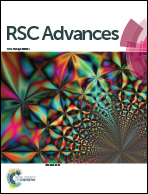Synthesis, characterisation and enhanced electrochemical performance of nanostructured Na2FePO4F for sodium batteries†
Abstract
Nanostructured pure Na2FePO4F was synthesised by a soft template method, followed by high-energy ball milling (HEBM) process and post-heat treatment. Physical and electrochemical properties of this sample were compared with as-prepared (pristine) sample. FESEM images recorded on the ball milled samples showed that the particles were of spherical morphology, with particle size centred around 100 nm. BET analysis illustrated a correlation between the surface area of the material with the electrochemical performance. Rietveld refinement of XRD patterns of the pristine and the HEBM samples together with the obtained reliability factor values demonstrated lower percentage of antisite disorder in HEBM sample. Compared to the pristine sample, which delivered an initial discharge capacity of only 87 mA h g−1, the HEBM sample showed an impressive storage capacity of 116 mA h g−1 at 0.1 C. Furthermore, at 1 C after 200 cycles, the ball milled sample displayed stable cyclability, retaining almost 80% of its initial discharge capacity, with an average coulombic efficiency of 99.4%. The improved sodium storage performance as compared to the pristine sample is discussed in terms of the reduced antisite disorder and associated sodium ion diffusion.


 Please wait while we load your content...
Please wait while we load your content...